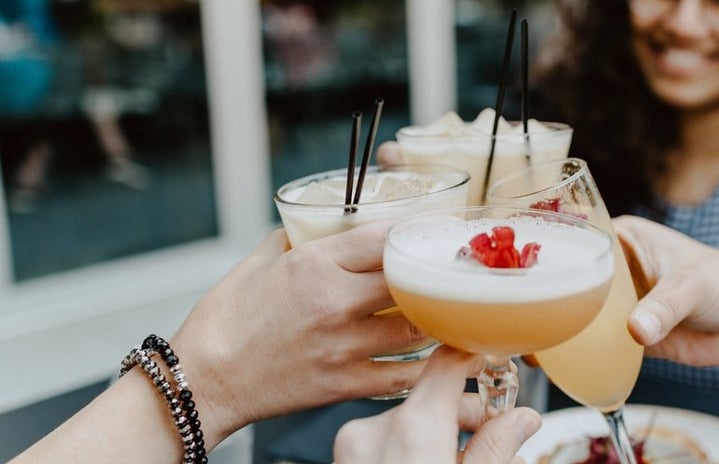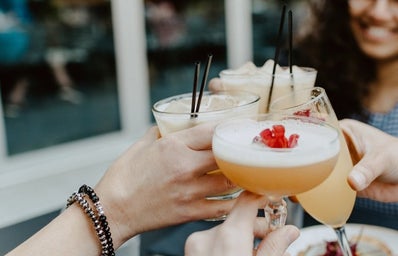It is a well known fact that college weekends are often synonymous with drinking. These images are noticeable in media, especially music and movies. On the darker side of this fun-looking image is addiction and the stories of sobriety sometimes in the media. There is a middle ground here that is not always as represented. Some people do not drink but are not in recovery. Some people cannot drink due to medications. Some people do not drink based on their religion. Some people choose not to drink for one month—for example, dry January. Some people drink some days, but there are others they are not in the mood to or have something important the next morning. Although not extremely popular, it is possible to find this middle ground in the media.
TikTok
When people think about not drinking alcohol, a main next step can be finding a replacement beverage in order to still have a glass to raise. One of the most popular accounts on Tik Tok that makes mocktails, @tommysmocktails, has close to 800,000 followers. If you do not want to make mocktails yourself, they are sold at some restaurants, and brands with cans of nonalcoholic spirits and beers have been expanding recently. When searching for this information, this may impact your For You Page algorithm, which can help you find others that are not drinking as well. Along with mocktails, people have posted about anxiety-reducing supplements they take instead of drinking. Following sober-curious creators can inspire people that want to take a break from drinking.
Television
The middle ground is not usually as noticeable as the other sides, however, it is present. For example, in the show “Ginny and Georgia,” the character Sophie goes to a Halloween party, and when asked if she wants a drink, she says no because she is driving that night. This brings awareness to having fun at parties without drinking and how it is important to not drink and drive. Taylor Nolan from “Bachelor in Paradise” has candidly spoken about how she does not drink. While many reality television shows support drinking, “Love Island” has changed the rules to a maximum of two drinks a day per contestant. Research has found watching people drink in films can make people more likely to drink. These are a few examples where alcohol is less prevalent to support people’s sober-curious experience.
Celebrities
There are multiple rappers that have said that they do not really enjoy drinking, including Jack Harlow, Pharrell Williams and Tyler the Creator. Jennifer Hudson has told reporters that she has never been interested in alcohol. Blake Lively says she has never had a desire for it, and she has launched an alcohol-free drinks company, Betty Buzz. Chrissy Teagan went sober in 2021, and she says the book that most helped her was “Quit Like A Woman: The Radical Choice to Not Drink in A Culture Obsessed with Alcohol.” Knowing and supporting these celebrities can make others who chose not to drink feel less alone.
Music
Before going out, many people have a playlist to listen to. On a night when someone is not drinking, there are some songs about that that could be listened to. Starting off with an older song from 2015, “Here” by Alessia Cara is about an experience at a party where she does not feel like people care about her and she wants to be doing something different, like having deeper conversations. The song “Club” by Kelsea Ballerini is about the unpleasant feelings the morning after. This is different from many of her other songs where she does sing about liking alcohol. Another song is “I Wish You Were Sober” by Conan Gray. It is about being in a relationship with someone, but feeling like it was at its best when the other person was drinking, and he wishes that is not the case. Lastly, the song “Root Beer Float” by Olivia O’Brien with Blackbear is a fun song about hanging out, having dessert and being sober. These songs could be added to people’s playlists to have more songs that represent their experiences.
Although not as common as finding media glorifying alcohol consumption or telling the other side of the story—the experience of addiction—the middle ground can be found and used to feel seen and have fun.


